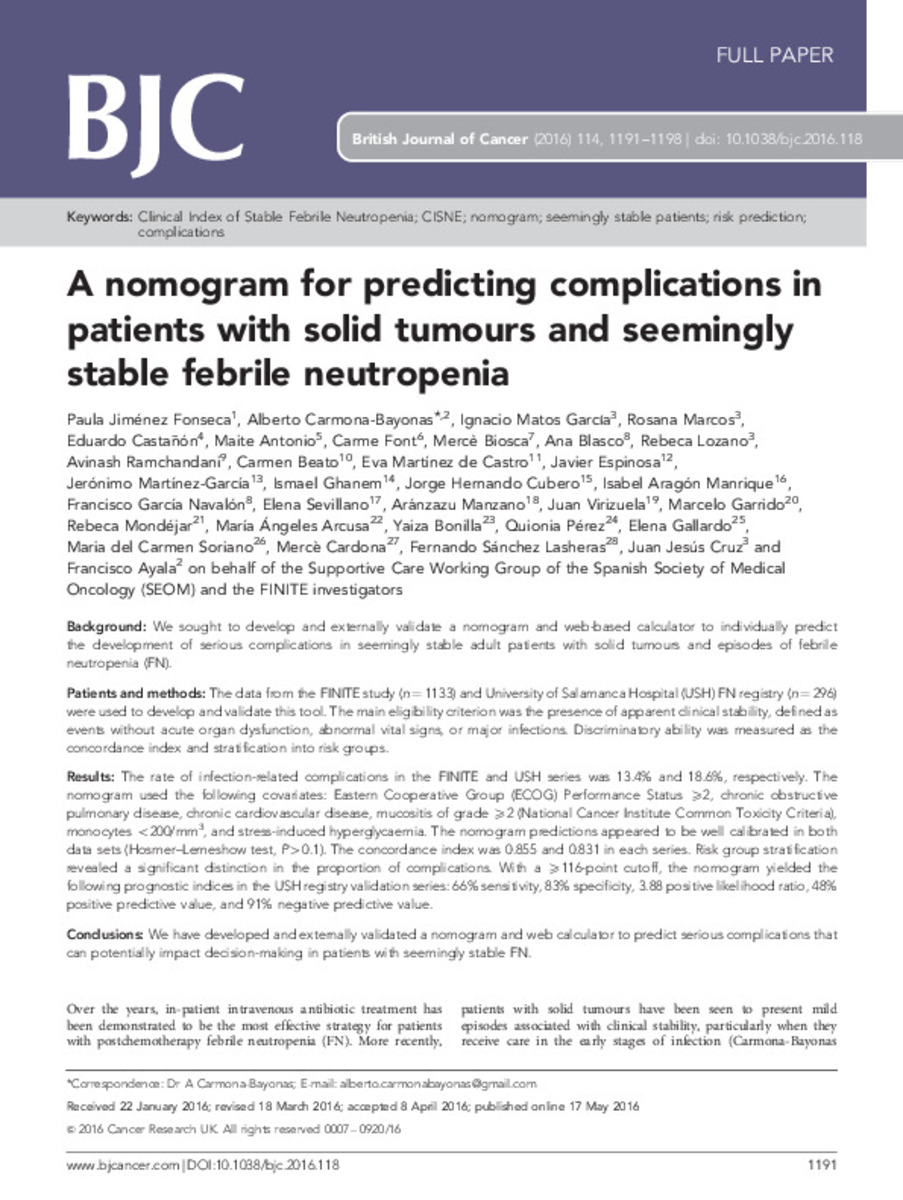A nomogram for predicting complications in patients with solid tumours and seemingly stable febrile neutropenia
Publisher:
Springer Nature
Note:
Creative Commons AttributionNonCommercial-Share Alike 4.0
Citation:
Jiménez-Fonseca, P. (Paula); Carmona-Bayonas, A. (Alberto); Matos, I. (Ignacio); et al. "A nomogram for predicting complications in patients with solid tumours and seemingly stable febrile neutropenia". British Journal of Cancer. (114), 2016, 1191 - 1198
Statistics and impact
0 citas en

Items in Dadun are protected by copyright, with all rights reserved, unless otherwise indicated.







